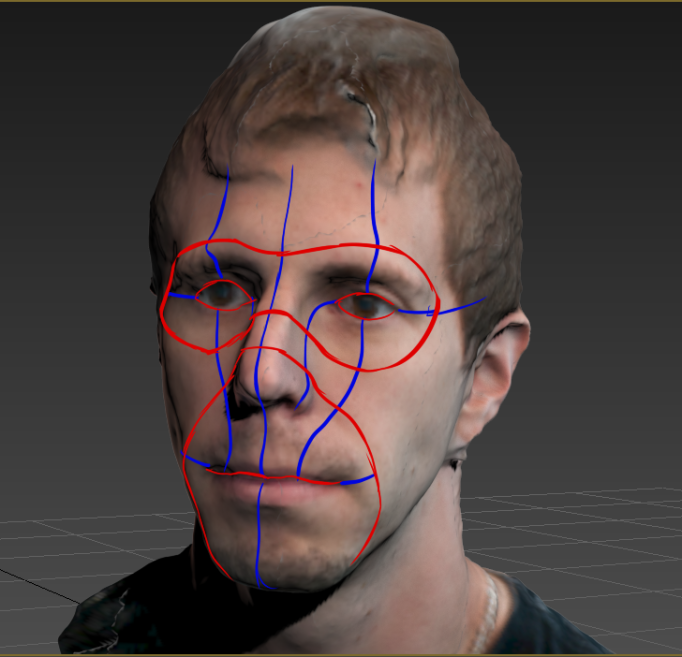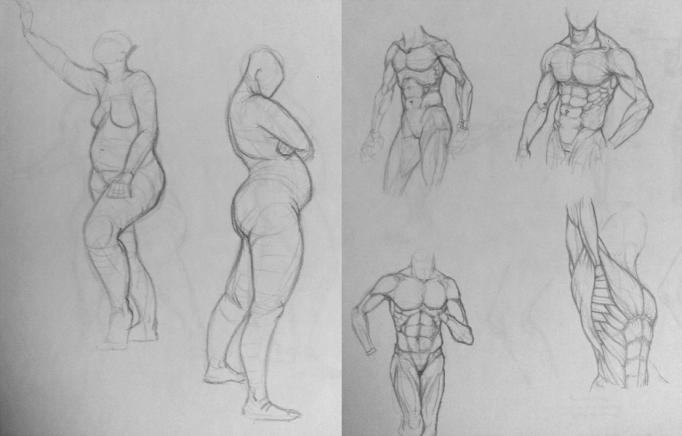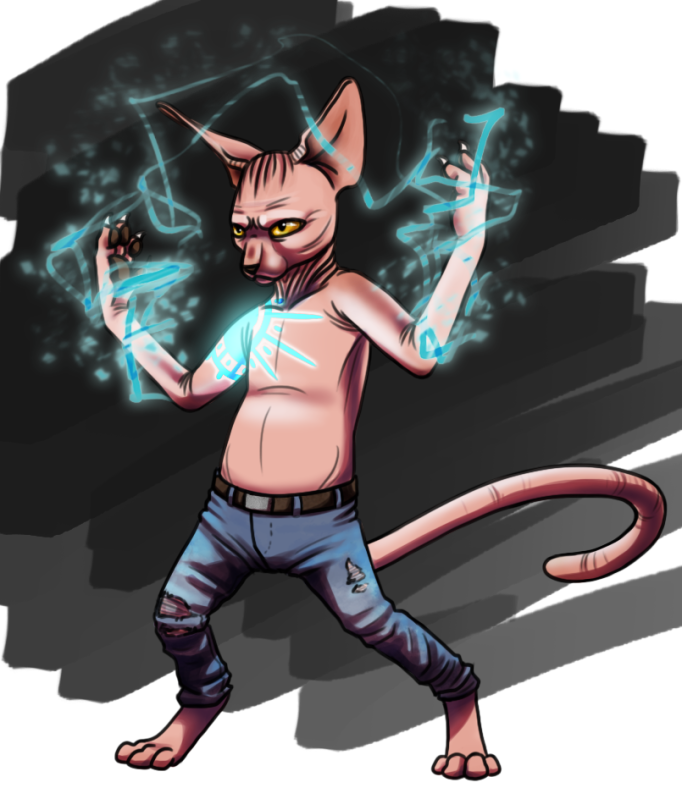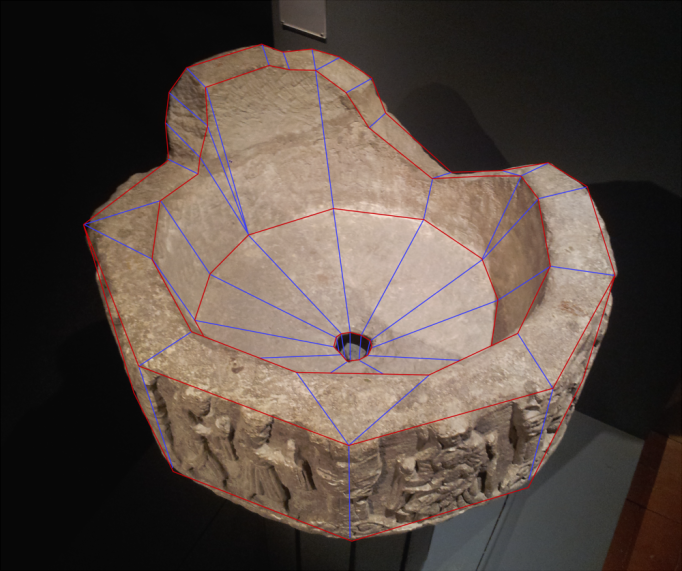This week we got to try something a little different, namely to attempt a retopo of our own faces. This was done by first taking a bunch of pictures of our faces from different angles with reference marks drawn on our cheeks and foreheads, and then letting the software 123D catch interpret these and assemble into a 3D mesh, complete with photo textures. It does this be recognizing points that are shared between several photos and from that creating a projection of a 3D model.
Unfortunately this didn’t quite work for me, since the software wildly disregarded the reference points, and even with lots of manual encouragement wouldn’t assemble much more than one very badly deformed temple and cheek. So unfortunately I didn’t really get to do a retopo of my own face, but rather of a random person from an example file…
It was still rather interesting though, both to create a retopo of an existing face, and to see what you can actually do by combining a series of pictures through software. Unfortunately the trial-period of 3D Coat expired before I started on this blog, so I didn’t really manage to take very good screenshots of what I managed, below is the only one I got…
However I did also include a picture of the model from 3DS Max, complete with basic edgeflow drawn on top, depicting the major areas to take into consideration when modeling faces, around the mouth and eyes, as well as the major face-loops that you should try to go for.
Also this week we were asked to look at the article “Photogrammetry in The Vanishing of Ethan Carter” and give our opinions on the subject. Basically photogrammetry is the process described above when creating a 3D mesh and textures from photographing an object from many different angles and letting software project them all together.
In short the process is very impressive indeed, and making a retopo of an existing high-poly model seems to be a lot easier and less time consuming than creating it from scratch. Also, assuming that you are going for a realistic look, ought to be able to mimic reality to a closer degree.
Something that I was a little bit worried about though was that it might be used to mimic reality too closely, which in some cases may very well be exactly what you want, but to me that would most likely become quite dull quite fast. I always found games that differed from photorealism to be a lot more intriguing visually. Ultimately they did dispel my worries though as the article stated that the photogrammetry was used in the production to create a base that felt “real” to build the rest from to the desired aesthetic.
Also worth noting is that although the technique undoubtedly shows a lot of promise, it isn’t perfect yet. A lot of factors had to be taken into consideration when taking the photos, such as lighting, contrast, and even extremely minute shaking when taking pictures, that would often make the process very complicated and time consuming. That is probably why the attempt at my face yielded such poor results…




















